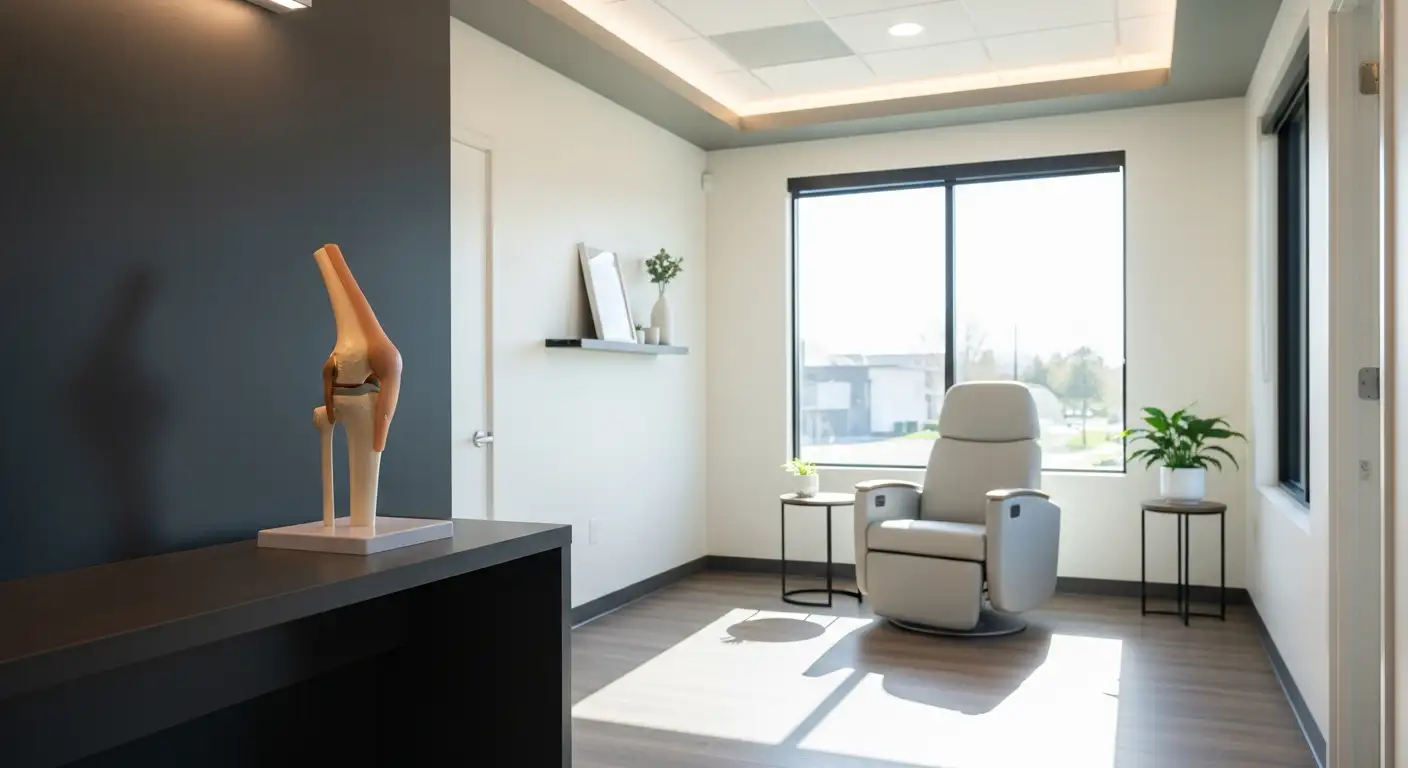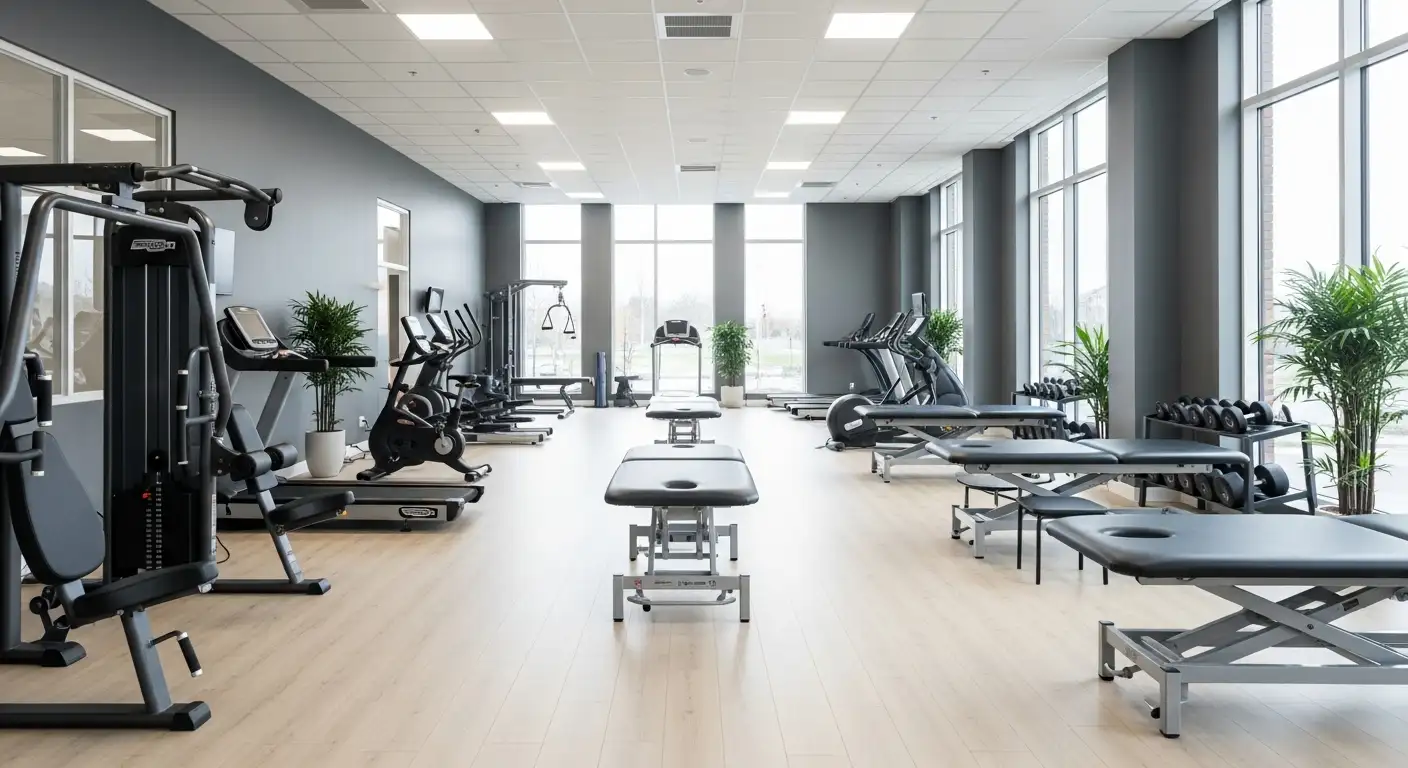Common Knee Injuries in Runners
Running is a popular form of exercise that provides numerous health benefits. However, it can also lead to various knee injuries. Understanding the common knee injuries in runners can help individuals recognize symptoms early and seek appropriate treatment.

Understanding Runner's Knee
Runner's knee, also known as patellofemoral syndrome, is a prevalent injury among runners, cyclists, and individuals engaged in sports involving jumping. It manifests as a dull, achy pain at the front of the knee and around the kneecap [1]. This condition is often caused by overuse, misalignment of the kneecap, or muscle imbalances.
Symptoms:
- Pain around the kneecap
- Discomfort when sitting for long periods
- Pain during activities like climbing stairs or squatting
Treatment:
- Rest and reduce physical activities that cause pain
- Apply ice to reduce swelling
- Engage in stretching and strengthening exercises
Research indicates that performing knee- and hip-strengthening exercises three times a week for six weeks can effectively reduce knee pain and improve physical activity levels [1]. Personalized physical therapy exercises focusing on quadriceps strengthening and flexibility are often more effective than knee braces or NSAIDs.

Exploring IT Band Syndrome
IT Band Syndrome (Iliotibial Band Syndrome) is another common knee injury among runners. The iliotibial band is a thick band of tissue running from the hip to the shin. Inflammation or tightness in this band can cause pain on the outside of the knee.
Symptoms:
- Pain on the outside of the knee
- Swelling or a snapping sensation
- Discomfort during activities like running or walking downhill
Treatment:
- Rest and avoid activities that worsen the pain
- Apply ice to reduce inflammation
- Perform IT band stretching and strengthening exercises
Preventive measures include proper warm-up, stretching, wearing suitable footwear, and maintaining a healthy weight. While IT Band Syndrome may not be entirely preventable, these steps can help decrease the risk.
Understanding these common knee injuries and their symptoms can guide individuals in seeking appropriate treatment and preventing further complications.
Diving Into Jumper's Knee
Jumper's knee, medically known as patellar tendonitis, is a prevalent overuse injury among runners. This condition thickens the tendon due to overloading, causing pain primarily at the front of the knee. It is especially common in younger patients, typically starting in adolescence or early adulthood [2]. The pain is most noticeable during activities that involve squatting, jumping, or landing.
Overview of Other Knee Injuries
Runners might encounter a variety of knee injuries, aside from the commonly discussed runner's knee, IT band syndrome, and jumper's knee. These injuries, although less common, can be serious and necessitate medical attention. They include:
- Anterior Cruciate Ligament (ACL) Injuries: These injuries involve the tearing of the ACL, a key ligament that helps stabilize the knee joint.
- Posterior Cruciate Ligament (PCL) Injuries: Similar to ACL injuries, these involve the PCL and can result from a direct impact to the knee.
- Collateral Ligament Injuries: These injuries affect the ligaments on the sides of the knee, either the medial collateral ligament (MCL) or lateral collateral ligament (LCL).
- Meniscus Tears: The meniscus is a piece of cartilage that provides cushioning between the femur and tibia. Tears can cause pain and swelling.
- Cartilage Injuries: These include conditions like chondromalacia patellae, which involve the softening and breakdown of knee cartilage, often leading to knee pain and an increased risk of other knee injuries.

Recognizing Knee Injury Signs
Identifying the signs of knee injuries early can help in seeking timely treatment and prevent further damage. Common signs to watch for include:
- Pain: Persistent pain in the knee, especially during or after physical activity.
- Swelling: Swelling in and around the knee joint, which can indicate inflammation or fluid buildup.
- Stiffness: Difficulty in bending or straightening the knee.
- Instability: A feeling of the knee giving way or being unstable.
- Popping or Clicking: Audible sounds from the knee, which can indicate ligament or cartilage issues.
Recognizing these signs and seeking professional help is essential for proper diagnosis and treatment, ensuring a quicker and more effective recovery process.
Prevention and Treatment Approaches
Strengthening and Stretching Exercises
For individuals dealing with common knee injuries in runners, preventive measures and effective treatments are essential. Strengthening and stretching exercises play a crucial role in this regard. Research published in the Journal of Orthopaedic & Sports Physical Therapy suggests that performing knee- and hip-strengthening exercises three times a week for six weeks can effectively decrease knee pain and improve physical activity for individuals with runner's knee.
Dr. Robert Marx recommends focusing on important muscle groups such as the quadriceps, hamstrings, and calves before running to prevent runner's knee. Contracting the opposite muscle group at the same time while stretching can help improve muscle flexibility [4]. Regular stretching can also aid in preventing or reducing knee pain, but individuals may still experience discomfort. It is generally recommended to rest and treat a sore knee until the pain diminishes.
Recommended Exercises:
- Quadriceps Strengthening: Squats, lunges, and leg presses
- Hamstrings Strengthening: Deadlifts, hamstring curls
- Calves Strengthening: Calf raises, farmer's walk
- Core and Glutes: Planks, bridges, and side-lying leg lifts
Plyometric strength training, involving jumping or explosive movements, can also aid in injury prevention. Light weight training for 10 to 15 minutes twice a week with exercises like squats, lunges, or farmer's walk is recommended.
Importance of Physical Therapy
Personalized physical therapy exercises aimed at strengthening the quadriceps and increasing flexibility have been found to be more effective for runner's knee than knee braces or taping. Strengthening exercises were also found to be more effective than taking NSAIDs in some cases [1].
Physical therapy can include a variety of treatments such as:
- Manual Therapy: Hands-on techniques to mobilize joints and soft tissues
- Supervised Exercise Programs: Tailored exercises to strengthen muscles and improve flexibility
- Education: Guidance on proper running techniques and injury prevention strategies
By integrating these approaches, individuals can manage and prevent common knee injuries effectively, ensuring a smoother and pain-free running experience.
Managing Knee Pain at Home
For runners experiencing knee pain, managing symptoms at home can be an effective strategy. This section will cover key approaches such as rest and recovery tips, as well as utilizing cold therapy.
Rest and Recovery Tips
Rest is crucial for anyone dealing with common knee injuries in runners. Giving the knee sufficient time to heal can prevent further damage and promote recovery. Here are some essential rest and recovery tips:
- Rest: Avoid activities that aggravate the knee. If running causes pain, it's advisable to take a break until the discomfort subsides.
- Elevate: Elevating the knee can reduce swelling. Place a pillow under the affected knee while resting.
- Wrap: Use an elastic bandage to wrap the knee. This can provide support and reduce swelling.
- NSAIDs: Non-steroidal anti-inflammatory drugs, such as ibuprofen, can help alleviate pain and reduce inflammation. Always follow the dosage instructions.
In addition to these measures, regular stretching exercises can help. Strengthening and flexibility exercises are beneficial for preventing knee pain and enhancing recovery. These exercises typically take up to six weeks to show noticeable improvement.
Utilizing Cold Therapy
Cold therapy is another effective method for managing knee pain at home. Applying cold can help reduce inflammation and numb the area, providing relief from pain.
- Icing: Apply an ice pack to the knee for 15-20 minutes every few hours during the first 48 hours after an injury. Make sure to wrap the ice pack in a towel to prevent frostbite.
- Cold Water Immersion: Sitting in cold water for 5 to 10 minutes, or longer if tolerable, can help alleviate soreness. This technique is used by many professional athletes. However, it's advisable to consult a doctor before attempting this method.
By incorporating these rest and recovery tips and utilizing cold therapy, individuals can manage knee pain effectively at home. Always consult with a healthcare provider if pain persists or worsens.
Seeking Professional Help
When dealing with knee injuries, especially those common among runners, seeking professional help is crucial. Healthcare providers and physical therapists offer expertise and tailored treatment plans to aid in recovery and prevent further injury.
Consultation with Healthcare Providers
It is essential for runners to recognize the signs of knee injuries and seek medical attention if pain persists. Healthcare providers can evaluate running-related knee problems and recommend appropriate treatment options. These professionals, including orthopedic and sports medicine experts, can provide guidance on patella pain and treatments for patellofemoral pain syndrome (PFPS), offering assistance and advice for individuals experiencing knee discomfort during physical activities.
During a consultation, a healthcare provider will typically:
- Conduct a physical examination
- Review the patient's medical history
- Order imaging tests (e.g., X-rays, MRI) if necessary
- Discuss symptoms and activity levels
Based on the evaluation, the provider can prescribe a personalized treatment plan that may include rest, medication, physical therapy, or other interventions.
Physical Therapy Recommendations
Physical therapy plays a vital role in the recovery and prevention of knee injuries in runners. A 2007 study found that personalized physical therapy exercises aimed at strengthening the quadriceps and increasing flexibility were more effective for runner's knee than knee braces or taping the knee [1]. Strengthening exercises were also found to be more effective than taking NSAIDs in some cases.
A physical therapist will create a customized exercise program that addresses the specific needs of the patient. Key components of the program may include:
- Strengthening Exercises: Focus on knee and hip muscles
- Flexibility Training: Enhance range of motion
- Balance Activities: Improve stability
- Gait Analysis: Correct running form
Research published in the Journal of Orthopaedic & Sports Physical Therapy suggests that performing knee- and hip-strengthening exercises three times a week for six weeks can effectively decrease knee pain and improve physical activity for individuals with runner's knee.
By following a structured physical therapy plan and consulting with healthcare providers, runners can effectively manage and recover from knee injuries, ensuring a safe return to their favorite activities.
References
[1]: https://www.healthline.com/health/exercise-fitness/runners-knee-exercises
[2]: https://www.templehealth.org/about/blog/common-knee-injuries-running
[3]: https://www.spirehealthcare.com/health-hub/specialties/bones-and-joints/common-knee-injuries-in-runners-and-their-treatments/
[4]: https://www.hss.edu/article_how-to-prevent-runners-knee.asp
[5]: https://www.baptisthealth.com/blog/family-health/best-exercises-for-managing-runner-s-knee-pain





